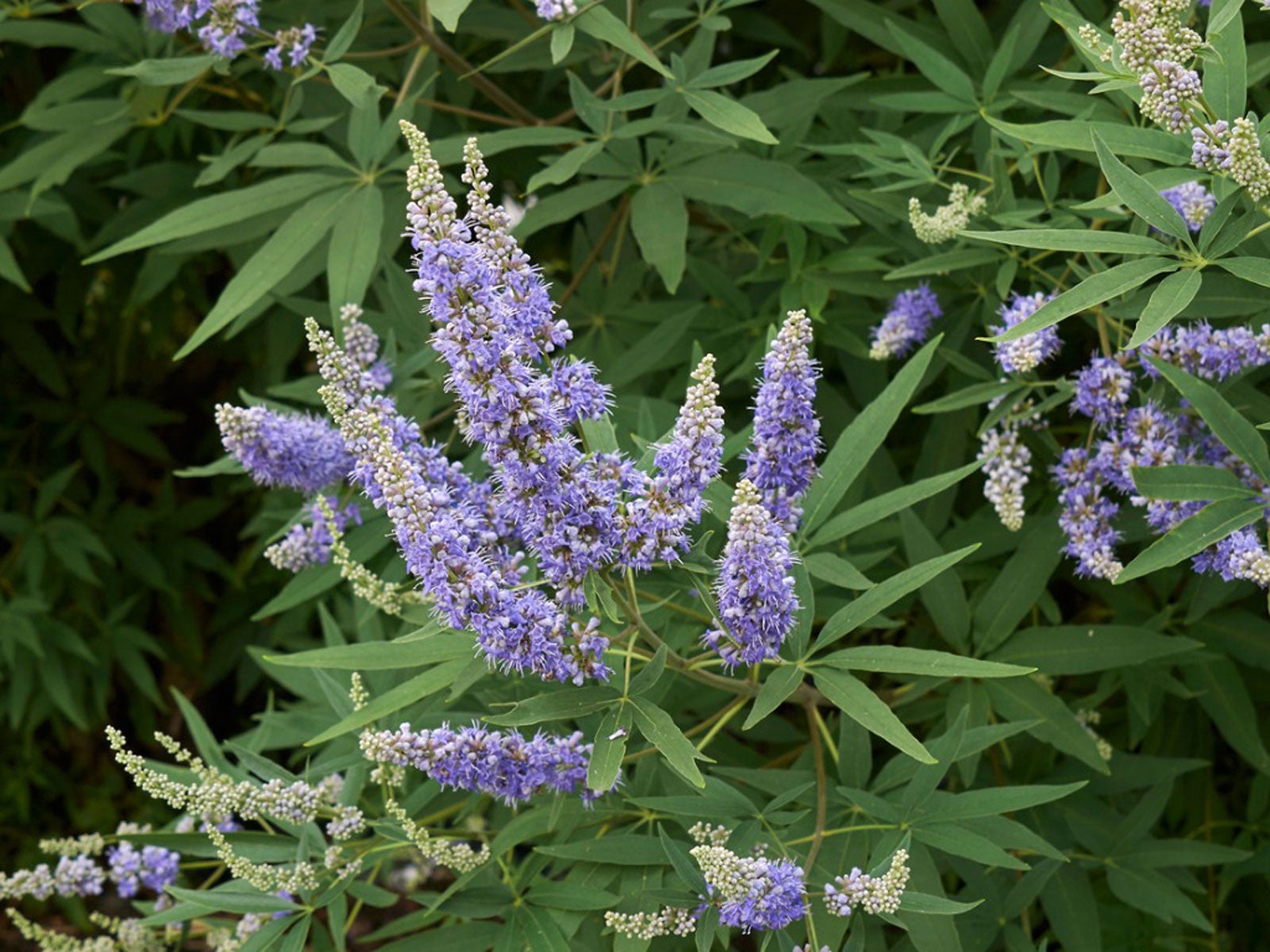Chaste Tree Info: Tips On Chaste Tree Cultivation And Care


Vitex (chaste tree, Vitex agnus-castus) blooms from late spring until early fall with long, upright spikes of pink, lilac, and white flowers. Any shrub or tree that blooms all summer is well worth planting, but when it also has pleasantly fragrant flowers and foliage, it becomes a must-have plant. Chaste tree garden care is easy, but there are a few care essentials you need to know to get the most from this outstanding plant.
Chaste Tree Info
The chaste tree is a native of China, but it has a long history in the U.S. It was first cultivated in 1670, and since that time it has become naturalized throughout the southern part of the country. Many southerners use it as a replacement for lilacs, which don't tolerate hot summers. Chaste trees, which are considered shrubs or small trees, grow 15 to 20 feet (5-6 m.) tall with a spread of 10 to 15 feet (3-5 m.). It attracts butterflies and bees, and it makes an excellent honey plant. Wildlife shuns the seeds, and it's just as well because you'll have to remove the flower spikes before they go to seed to keep the plant flowering.
Chaste Tree Cultivation
Chaste trees need full sun and very well-drained soil. It's best not to plant them in soil that is rich in organic matter because organically rich soils hold too much moisture close to the roots. Chaste trees do very well in xeric gardens where water is scarce. Once established, you'll probably never have to water a chaste tree. Inorganic mulch, such as pebbles or stones, allows the soil to dry between rains. Avoid using organic mulches such as bark, shredded wood, or straw. Fertilize the plant every year or two with general-purpose fertilizer. Chaste trees freeze and die back to ground level during severe weather. This isn't a cause for concern because they regrow quickly from the roots. Nurseries sometimes prune the plant into a small tree by removing some of the main stems and all of the lower branches; but when it regrows, it will be a multi-stemmed shrub. You'll need to prune annually to control the shape and size and encourage branching. In addition, you should remove the flower spikes when the blossoms fade. Allowing the seeds that follow the flowers to mature reduces the number of flower spikes late in the season.
Sign up for the Gardening Know How newsletter today and receive a free copy of our e-book "How to Grow Delicious Tomatoes".

Jackie Carroll has written over 500 articles for Gardening Know How on a wide range of topics.